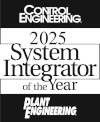
Winery Begins Digital Transformation with Automated Brix Monitoring & IFM Integration
A leading California winery was facing manual sampling inefficiencies. E Tech Group implemented an IFM Integration project, achieving fully-automated in-tank brix monitoring with our IO link platform expertise.
The Project: Transition Manual Brix Monitoring to an Automated System
A California winery faced operational inefficiencies with manual wine sampling and turned to E Tech Group for an IFM integration project. The goal was a seamless transition to fully automated brix monitoring. Our proposed solution involved IO Link Masters for Modbus TCP data retrieval and two durable NEMA 4x stainless steel enclosures. The client chose to contract E Tech Group as their integration partner because of our proven expertise in IO Link Platform, and our proven track record of providing reliable process automation solutions.
The Solution: Leverage Expertise & Cooperation for a Custom Automation Solution
The project team partnered with IFM and a research university to verify the precision of a new pressure transmitter for accurate brix measurements. Our team worked with the winery’s maintenance team to secure space for control panels, and collaborated with Tanknet for the system integration. An IO Link Master was set up for communication through Modbus, leading to successful implementation of the automated brix monitoring system.
The Results: Process Automation Optimizes the Sampling Process
We successfully acquired brix measurements within the tanks and integrated Modbus IO Link Masters into the control system, meeting the client’s goals for automated brix monitoring. Our automation team’s expertise and collaboration resulted in a positive outcome, moving this leading winery forward into their digital transformation.

Maximizing a Distribution Center’s Capacity with Custom PLC Software
A global parcel services provider needed a custom PLC program for their sortation systems. E Tech Group provided PLC program development, troubleshooting and system start-up to meet a tight timeline and improve productivity.
The Project: Improve Efficiency with Material Handling Automation
E-commerce growth and expedited shipping demands have posed challenges for distribution centers. To keep up, many centers are implementing automation solutions to maximize throughput and reduce fault recovery time.
A global parcel services leader outsourced PLC program development for their sortation systems, but faced a tight timeline. E Tech Group was hired to quickly develop and troubleshoot the programs, as well as lead system startup and testing.
The Solution: Create a Custom PLC Sorting Solution
The parcel operations required extensive fault monitoring and suppression, as well as package flow rate tracking, to maximize throughput and reduce system downtime. E Tech Group prioritized the commission of the primary sorter systems, including diagnosing and correcting errors and setting up communication between the PLC and the customer’s warehouse management system. They also set up numerous conveyor belts that were required to run with the package tracking logic.
The Results: Maximized Operations on a Quick Turnaround
E Tech Group completed changes to the primary sorter systems and stayed on board to support testing and commissioning of the remaining parts of the primary sorter line. With our programming support, the system became fully operational within a few months. This helped the parcel services leader to maximize its large-scale distribution center operations. As a result, E Tech Group was later invited to lead the development, startup and testing of the second phase that included an additional five sortation systems.
Contact Us
"*" indicates required fields

Rockwell Automation Solutions Improve Spice Company’s Production Capabilities
When a major spice producer decided it was time to convert key manual processes to automation in order to improve efficiency, E Tech Group leveraged Rockwell Automation solutions that supported increased throughput and cost reductions.
The Project: Design a Custom Automation System for a Spice Supplier
A supplier of culinary spices needed to automate their receiving and washing areas to improve efficiency and visibility. The existing manual approach caused bottlenecks and hindered production potential, making automation crucial for optimizing processes, streamlining workflows and gaining the ability to scale.
The Solution: Utilize Rockwell Automation Technology for Seamless Transition
E Tech Group used a range of Rockwell Automation hardware and technologies to align with the customer’s objectives, resulting in a more streamlined and responsive control system. They also upgraded the hot wash hardware using a suite of Rockwell Automation components, improving efficiency, reliability, and safety. Rockwell Automation’s Studio 5000 v33 and Factory Talk View Studio Machine Edition provided a user-friendly control system interface for the spice supplier.
The Results: A Cost-Effective Automation Solution with Real-Time ROI
Our automation and engineering firm provided dedicated support to the project, which resulted in increased throughput and reduced production costs. The expected return on investment will materialize in three years, showcasing the cost-effectiveness of the Rockwell-based automation solution. This transformation optimized operations and paved the way for future improvements, highlighting the effectiveness of our collaboration and Rockwell Automation’s process control solutions.
E Tech Group’s system integration expertise resolved complex integration challenges for a major food distributor, fostering trust and future collaborations with the customer.
Challenge
Challenges in complex projects are inevitable, but the dedication to overcome challenges is what sets exceptional system integration firms apart. This case study highlights how E Tech Group, stepped in when another company was unable to fully execute a project. The case study underscores how E Tech Group’s exceptional capabilities not only remedied the situation but also earned the trust of the client to support three additional projects to-date.
The client, a major food distributor, needed to integrate a conveyor system with their pocket filler, vacuum filler, and steamer. Delays in the system deployment resulted from understaffed control support, incomplete project aspects, and equipment transfers from another facility. Plus, new conveyors had been installed by a different controls integrator. The client sought E Tech Group’s help to create a clear project outline and overcome the project challenges.
Solution
E Tech Group staffed the project with highly skilled engineers with expertise in canning lines and control strategy. First, the project team examined the state of the production line to determine what needed to be finished. They discovered that the current contractors involved were facing too many challenges with the conveyors before the system could become operational and the project deployment lacked direction because of this.
E Tech Group’s engineers presented a 30 itemed punch list to the startup team which became the central punch list for the project. E Tech Group met with plant technicians to determine how the existing OEM equipment interlocks to the conveyor system and met with OEM experts to have a firm understanding of the pocket filler design. The conveyor company later left the site without completing their controls, which caused E Tech Group to create a controls strategy that integrated the conveyor system with the existing pocket filer, vacuum filler, and seamer. The project team corrected electrical issues, standardized the programming between each OEM equipment and conveyor system, and tested the system’s functionality including the customer’s existing Allen Bradley ControlLogix PLCs and PanelView Plus HMIs.
Results
By promptly tackling issues and implementing effective solutions, E Tech Group restored the project’s trajectory within weeks. The team’s expertise not only conquered challenges but also built client trust, leading the customer to engage E Tech Group for three additional projects to-date. E Tech Group rose to the occasion with system integration expertise and dedication, helping the client reach their goals and supporting positive project outcomes.

